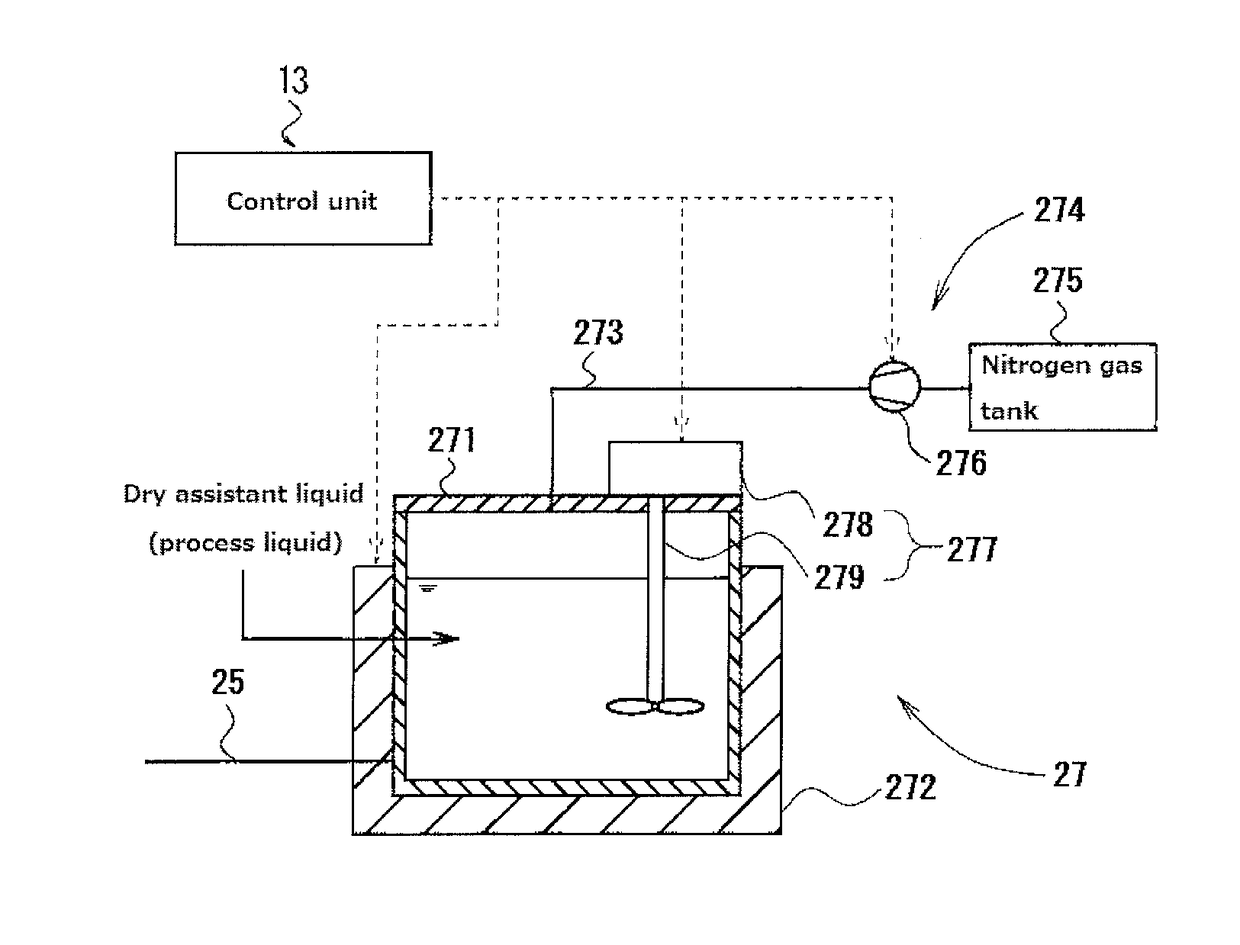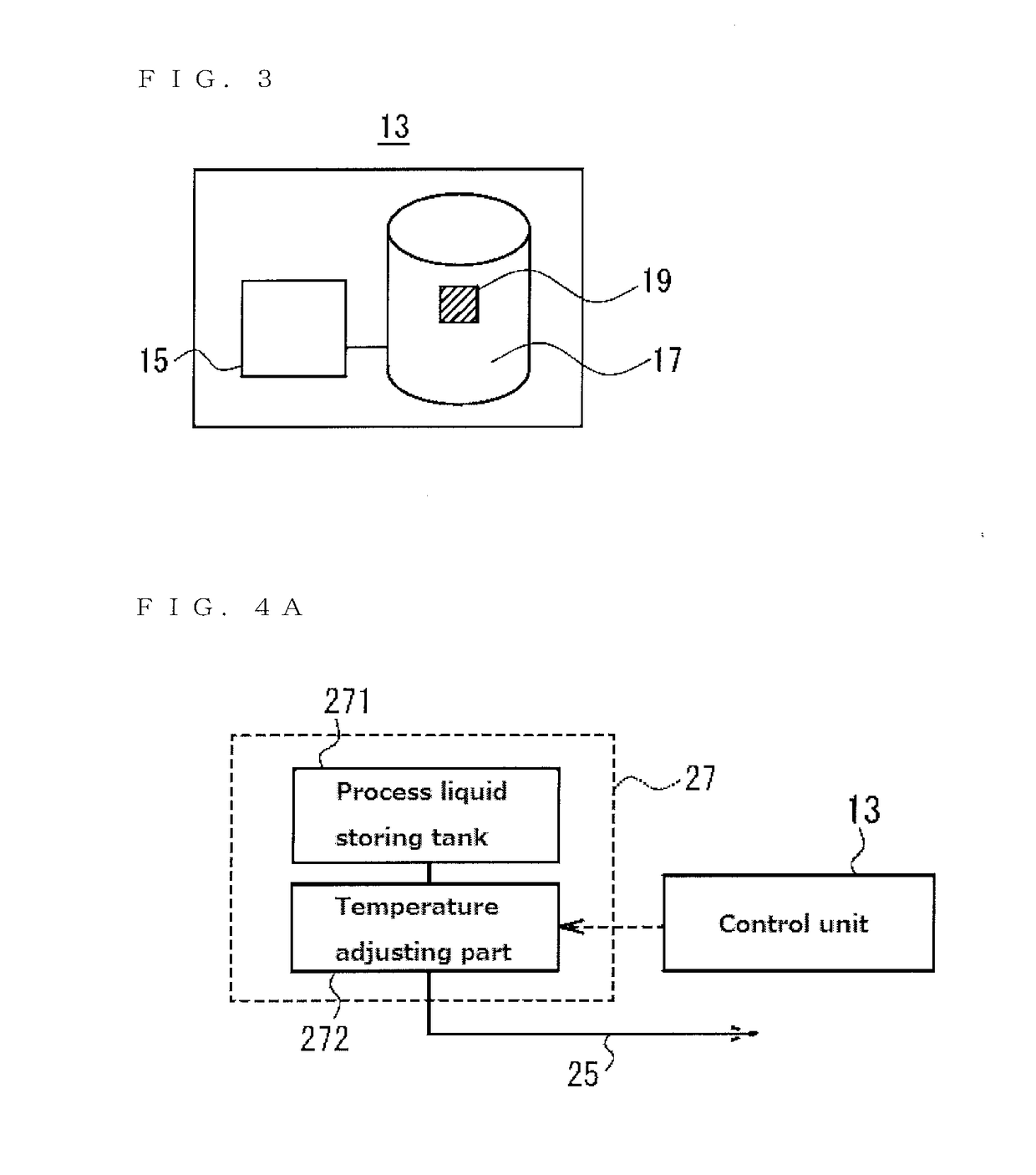Substrate treating apparatus and substrate treating method
- Summary
- Abstract
- Description
- Claims
- Application Information
AI Technical Summary
Benefits of technology
Problems solved by technology
Method used
Image
Examples
first embodiment
[0108]Hereinafter, a first embodiment of the present disclosure will be described. FIG. 1 is an explanatory view illustrating an outline of a substrate treating apparatus 1 according to the present embodiment. FIG. 2 is a schematic plan view illustrating an internal structure of the substrate treating apparatus 1. In all the drawings, in order to make a directional relationship between illustrated members clear, orthogonal coordinate axes XYZ are appropriately represented. In FIGS. 1 and 2, their XY plane represents a horizontal plane and their +Z direction represents a vertically upper direction.
[0109]The substrate treating apparatus 1 is usable for treatment for, e.g., various substrates. The “substrates” denote various substrates such as a semiconductor substrate, a glass substrate for a photomask, a glass substrate for a liquid crystal display, a glass substrate for a plasma display, a substrate for an FED (field emission display), a substrate for an optical disc, a substrate fo...
second embodiment
[0220]A second embodiment according to the present disclosure will be described hereinafter.
[0221]The present embodiment is different from the first embodiment in that a process liquid is used as a washing liquid and / or a rinsing liquid and further the step of supplying the treatment is performed as a washing / rinsing step. In the present embodiment, this manner makes it possible to reduce the number of steps and improve the efficiency of the treatment, and to restrain pattern collapse. Thus, the surface of a substrate can be satisfactorily dried.
[0222]A substrate treating apparatus and a control unit according to the second embodiment may be an apparatus and a unit which have the same constituents as the substrate treating apparatus 1 and the control unit 13 according to the first embodiment (see FIGS. 1 and 2). Thus, the same reference numbers are attached to the constituents, respectively, and descriptions thereon are omitted.
[0223]The above-mentioned process liquid supplying unit...
third embodiment
[0240]The following will describe a third embodiment of the present disclosure. The present embodiment is different from the first embodiment in that a pattern-formed surface of a substrate is beforehand subjected to water-repellent treatment. When a solidified body is sublimated, the solidified body may cause stress to act on a pattern of a substrate. If the degree of the sublimation of the solidified body is nonuniform at this time, a nonuniform stress is applied to the pattern so that pattern collapse may be caused. However, by subjecting the pattern-formed surface beforehand to water-repellent treatment as performed in the present embodiment, convexities of the pattern are mutually repelled by repulsive force even when the pattern convexities are caused to move toward contact with each other. Consequently, pattern collapse can be prevented. In this case, the surface of the substrate can be more satisfactorily dried than in the case of subjecting the pattern-formed surface of the...
PUM
 Login to View More
Login to View More Abstract
Description
Claims
Application Information
 Login to View More
Login to View More - R&D
- Intellectual Property
- Life Sciences
- Materials
- Tech Scout
- Unparalleled Data Quality
- Higher Quality Content
- 60% Fewer Hallucinations
Browse by: Latest US Patents, China's latest patents, Technical Efficacy Thesaurus, Application Domain, Technology Topic, Popular Technical Reports.
© 2025 PatSnap. All rights reserved.Legal|Privacy policy|Modern Slavery Act Transparency Statement|Sitemap|About US| Contact US: help@patsnap.com



